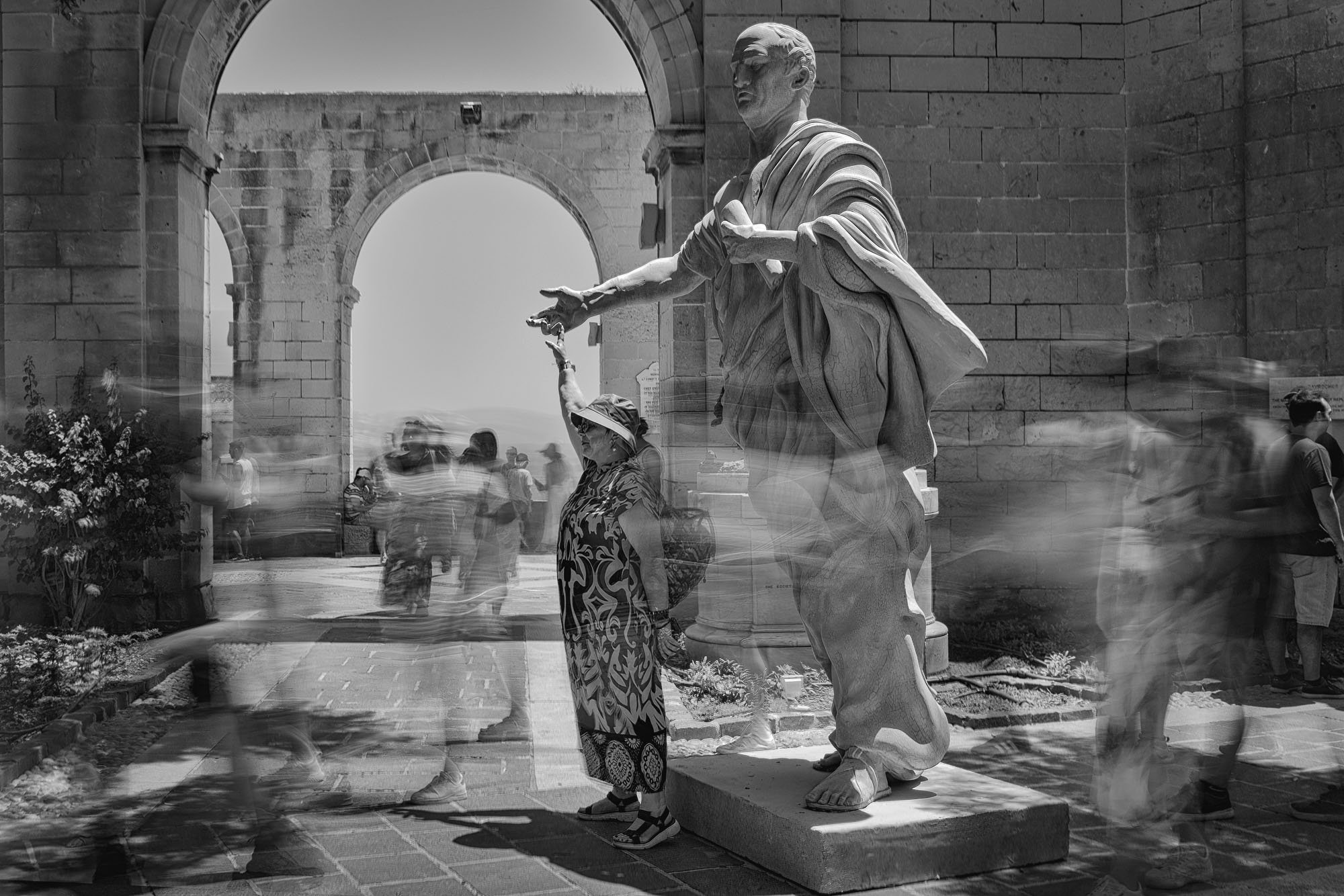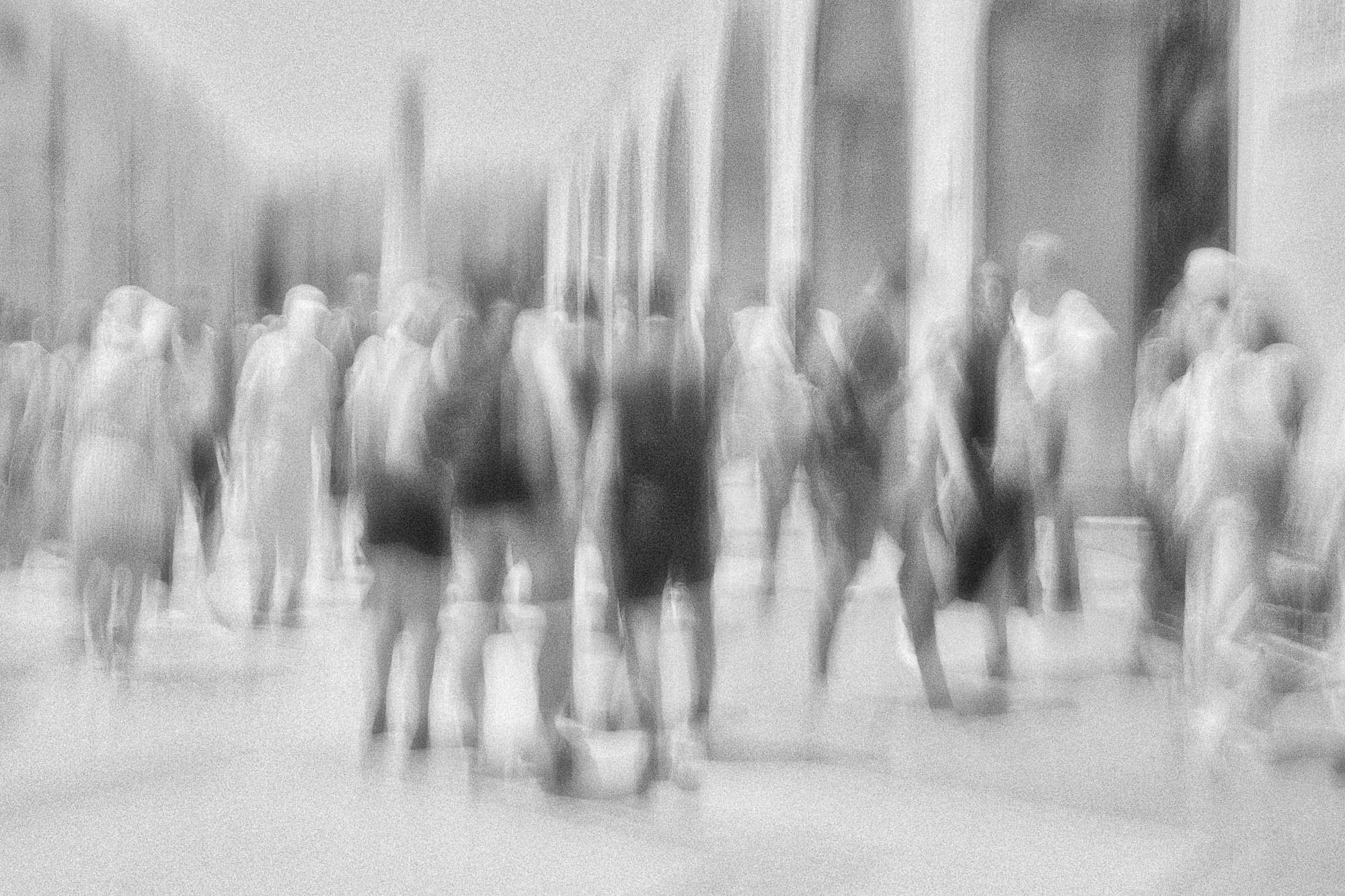The Lull Between the Frame


Moments That Arrive, and Those That Do Not
How many times have we seen a scene unfold and reacted instinctively? The shutter clicks. Perhaps there is even time to capture a second frame, and then the moment vanishes into the ether. There is a quiet sense of satisfaction, one in the can. We move on, eyes sharpened, senses heightened, attuned once more to the rhythm of the street, searching for the next image.
But there is another kind of walk. One where the streets offer nothing. Or at least, nothing that catches the eye. We drift from corner to corner, scanning the pavements, waiting for a spark that never quite arrives. The camera grows heavy. We begin to wonder if we are simply missing something, or worse, if we are no longer seeing at all. At times like these, I find myself asking whether I should push on, determined to stay the course, or quietly accept it as a bad day at the office.
The lull between frames can be unsettling. Street photographers often speak of warming up, getting into the zone, as though seeing were a muscle that needs time to respond. And they are right. Hand–eye coordination, like any craft, requires practice. But staying in that zone, once found, can be even harder. So what happens in the in-between? When nothing comes, when our internal rhythm slips, and we are left walking, still looking, but without direction?
After the Project Ends
Lately, I have found myself dwelling in that space more often. I have just closed the book on a long-term project. It was one that began without a clear intention, but gradually took shape as the images accumulated and the possibility of a book emerged. Over time, my walks became more directed, more deliberate. I found myself photographing with purpose. And now that it is over, I feel in a state of flux. The rhythm has changed, and my concern is that the pause between images might stretch too far. Perhaps what is needed is not another project just yet, but a change of scene. And more importantly, a shift in mindset.
The View from the Sofa
On the subject of mindset, I have to confess to being an avid YouTube watcher. Let’s be honest, it is often more interesting than the evening soaps. Among my regular subscriptions are a number of street photographers whose videos I enjoy. There is something reassuring about seeing others wrestle with light, timing, and uncertainty from the comfort of a sofa. At their best, these channels can be insightful and instructive, offering a glimpse into how photographers navigate the unpredictable rhythms of the street.
Yet I have also noticed a shift. As some of these channels grow, the balance begins to tilt. What began as an honest look at the process of image-making gradually becomes more about performance. The lull between frames, once used for quiet observation, is increasingly occupied by the demands of content. Walking, talking, and scanning the street for the decisive moment is not an easy combination. They may still have a camera in hand, but attention is elsewhere. As videography takes precedence, the photography often becomes secondary, quietly relegated to B-roll.
The Cost of Performance
Perhaps I am overthinking it. And in fairness, some of these content creators do still go out and take photographs without the added pressure of producing video. But others do not. And that feels like a loss. Their intent has changed. The lull between meaningful frames has become so crowded with performing in front of a video camera that it is difficult to see any usable imagery being created at all.
Can we blame this on intention? A content creator’s mindset is to produce videos. They inevitably work to a formula that suits their channel and holds the attention of their audience. They hit the streets with a tried-and-tested production list designed to shape their content.
When I was finalising my book, I also walked with the weight of needing to produce. It changed the way I looked. The freedom of the photowalk gave way to something tighter. The constraints of a shot list took priority. I sometimes wonder whether I began turning away from images simply because they did not belong to the plan.
And when that happens, the gap between images begins to stretch. Not because the moments are missing, but because I have quietly ruled them out.
A Question Still Open
I realise I have said quite a lot without reaching a clear conclusion. Except, perhaps, a small critique of the way street photography is now so often wrapped in video performance. But I do not say that from a place of detachment. I have worked in commercial photography. I know what it means to deliver. For many of these content creators, this is no longer a side project. It has become a job. And the demands of production are real. The need to keep the content flowing, to stay visible, to feed an audience. It all comes at a cost. Sometimes that cost is quality. And I understand why. I have been there, and I have the scars.
What I am grateful for, perhaps more than anything, is that I am a street stroller. I do not need to justify my reasons or account for my time. I do it because this kind of photography is a form of relaxation. Well, that is until the final months of finishing a project, when work mode has a habit of creeping back in.
So, for the reader who tends to skip to the last paragraph first, this post is about the lull between frames. Whether we fill that time productively, or whether being overly productive makes it harder to emerge from a lull at all, remains a question I am still considering.


